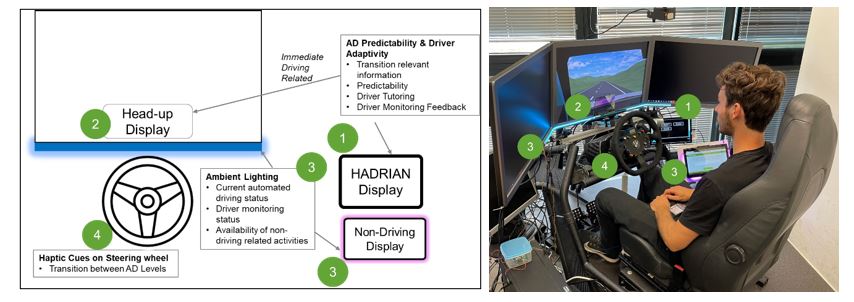Acceptance and safety of automated driving vehicles is currently limited by unclearly defined driver roles, especially when transitioning between multiple levels of automated driving. The EU HADRIAN project investigates how increasing the predictability of automated driving, together with a vehicle that dynamically adapts and shapes itself like a “fluid” around the driver could improve acceptance and safety of automated driving. Over the last 2.5 years of the project, the consortium has investigated separate solutions including head-up displays, predictability displays, tutoring applications, steering wheel haptic feedback, and ambient cabin lighting. In an integration study, Virtual Vehicle now just completed a study to bring these separate innovations for the first time together in a driving simulator. Forty participants were driving the simulator alternatingly at manual, partial, and conditional automated driving level. Half of them drove in a baseline condition and the other half experienced predictable automated driving and an adaptive cockpit. Initial study results indicate that with the tested HADRIAN innovations, drivers were able to better transition back to manual driving after automated driving. The findings of this study will be used in a HADRIAN field-demonstration to demonstrate their technical feasibility and benefits in an open road environment in fall 2022.
Latest News
- HADRIAN – 1st Symposium on Fluid Human-Systems Interaction & Final Event May 11, 2023
- HADRIAN Final Event February 28, 2023
- VIF completed a final test of the automated driving functions for the HADRIAN field test January 31, 2023
- HADRIAN innovation presented at the European Researchers‘ Night in Salzburg, Austria December 20, 2022
- HADRIAN project @ TRA 2022 December 19, 2022

